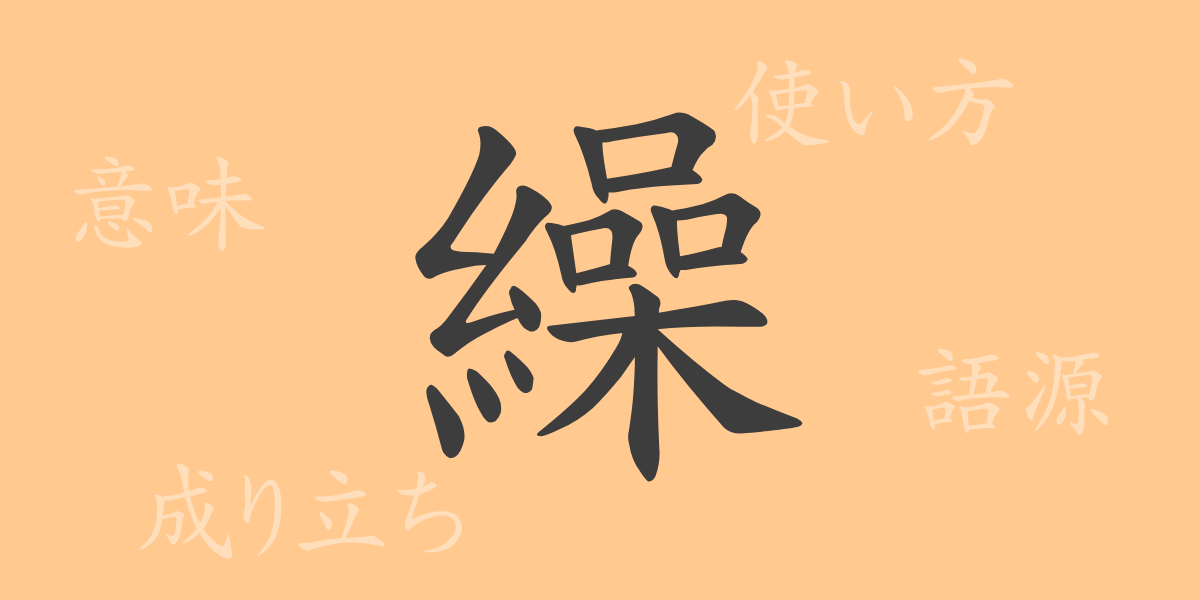The rich meanings and history embedded in each kanji reflect the depth of Japanese culture. This article focuses on the commonly used kanji “繰(くり),” which is frequently used in daily life but whose origins and meanings are not widely known. From its etymology to its meanings, uses, readings, stroke count, and radicals, we will explore the world of “繰(くり).” Let’s delve into the profound aspects of the Japanese language through the idioms, expressions, and proverbs that incorporate this kanji.
Origin of 繰(くり) (Etymology)
The kanji “繰(くり)” represents concepts related to spinning thread. The character depicts the repeated action of pulling out thread, symbolizing its use in ancient textile production. This character is often used to indicate actions or tasks related to thread and, by extension, abstract concepts such as repeating time or words.
Meanings and Uses of 繰(くり)
“繰(くり)” has multiple meanings. Generally, it is used to mean repeating actions, pulling out thread, or adjusting time. In economic contexts, it refers to the renewal of financial contracts upon maturity, as in “繰り越し(くりこし).” This kanji appears in various verbs and nouns, depending on the context, demonstrating its versatility in the Japanese language.
Readings, Stroke Count, and Radical of 繰(くり)
The kanji “繰(くり)” has several readings in Japanese.
- Readings: On’yomi (Chinese reading) – “ソウ(そう)”; Kun’yomi (Japanese reading) – “く.る(くる),” “く.り(くり),” “く.り-(くり-)”
- Stroke count: “繰(くり)” consists of 14 strokes.
- Radical: The radical is 糸部(いとへん), related to thread.
Idioms, Expressions, and Proverbs Using 繰(くり)
Here are some idioms, expressions, and proverbs that include “繰(くり).”
- 繰り返し(くりかえし): Doing the same thing repeatedly.
- 繰り越し(くりこし): Carrying over unfinished matters to the next period.
- 繰り出す(くりだす): To pull out from inside; also means to send out people or things in large numbers.
- 手繰り寄せる(たぐりよせる): To pull closer by reeling in thread or net; metaphorically, to gather information or people gradually.
- 繰り上げる(くりあげる): To move a scheduled time or order forward.
These expressions are frequently used in everyday conversations and business contexts in Japan.
Conclusion on 繰(くり)
The kanji “繰(くり)” is characterized by its simplicity and diverse usage. Originating from the act of spinning thread, it has evolved to encompass concepts of repetition and sequencing. Its use in the Japanese language enriches nuances and expands the range of expressions. Through this article, we hope you gain a deeper understanding of the multifaceted nature of “繰(くり)” and enhance your appreciation of the Japanese language.

























